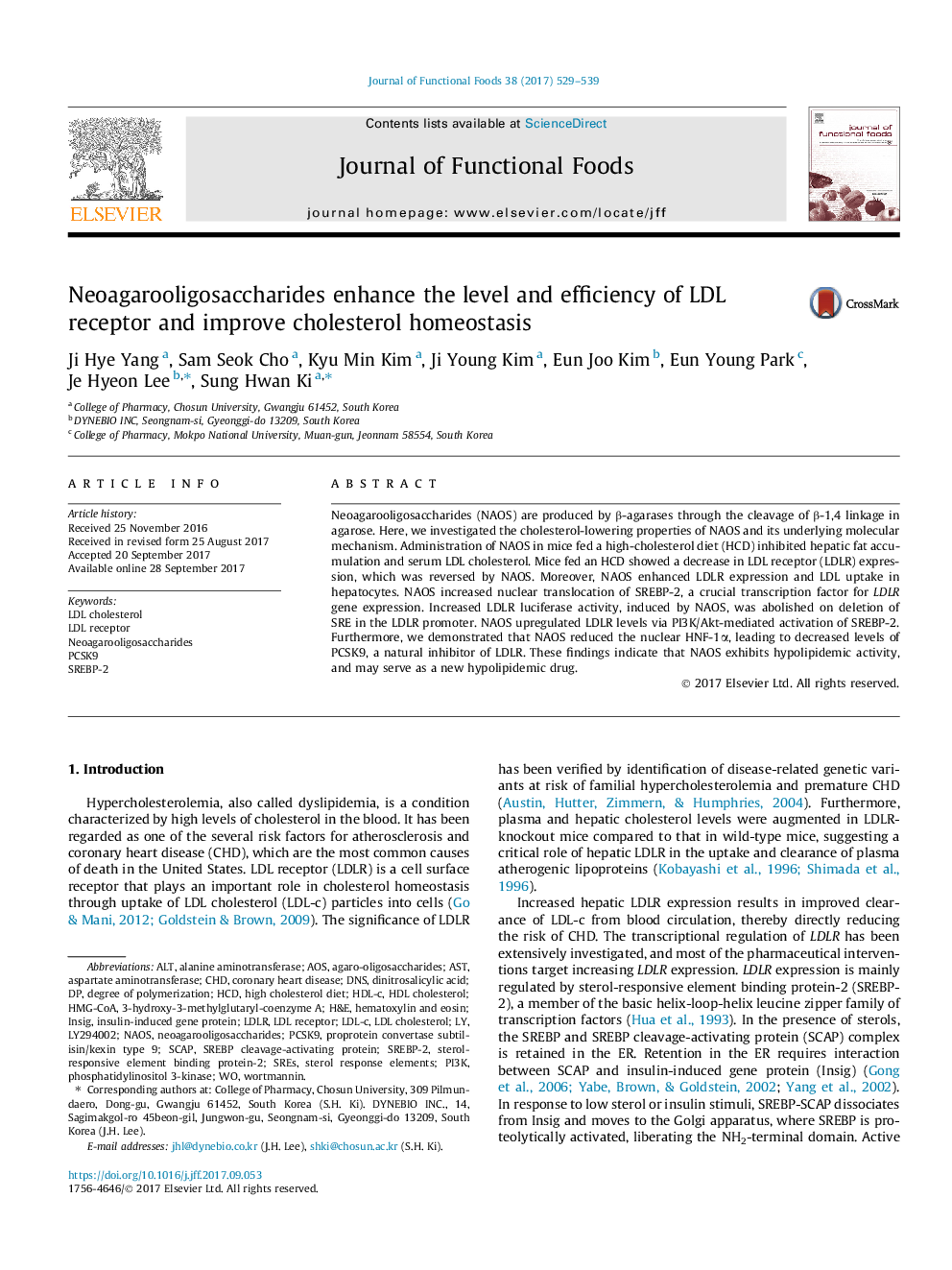| کد مقاله | کد نشریه | سال انتشار | مقاله انگلیسی | نسخه تمام متن |
|---|---|---|---|---|
| 5137085 | 1494528 | 2017 | 11 صفحه PDF | دانلود رایگان |

- We investigated cholesterol-lowering effect of Neoagarooligosaccharide.
- Neoagarooligosaccharide improves lipid profiling in mice fed a high-cholesterol diet.
- Neoagarooligosaccharide increased LDL receptor via SREBP-2 activation.
- Neoagarooligosaccharide-induced LDL receptor expression is mediated by PI3K/Akt.
- Neoagarooligosaccharide decreased PCSK9 expression through HNF-1α reduction.
Neoagarooligosaccharides (NAOS) are produced by β-agarases through the cleavage of β-1,4 linkage in agarose. Here, we investigated the cholesterol-lowering properties of NAOS and its underlying molecular mechanism. Administration of NAOS in mice fed a high-cholesterol diet (HCD) inhibited hepatic fat accumulation and serum LDL cholesterol. Mice fed an HCD showed a decrease in LDL receptor (LDLR) expression, which was reversed by NAOS. Moreover, NAOS enhanced LDLR expression and LDL uptake in hepatocytes. NAOS increased nuclear translocation of SREBP-2, a crucial transcription factor for LDLR gene expression. Increased LDLR luciferase activity, induced by NAOS, was abolished on deletion of SRE in the LDLR promoter. NAOS upregulated LDLR levels via PI3K/Akt-mediated activation of SREBP-2. Furthermore, we demonstrated that NAOS reduced the nuclear HNF-1α, leading to decreased levels of PCSK9, a natural inhibitor of LDLR. These findings indicate that NAOS exhibits hypolipidemic activity, and may serve as a new hypolipidemic drug.
Journal: Journal of Functional Foods - Volume 38, Part A, November 2017, Pages 529-539